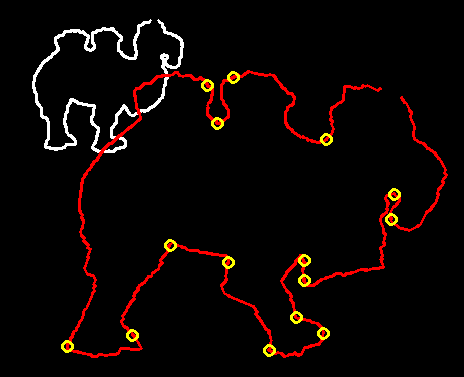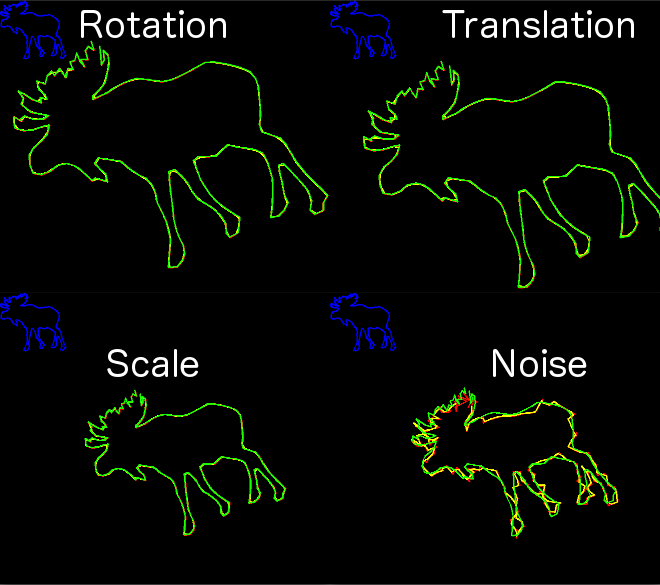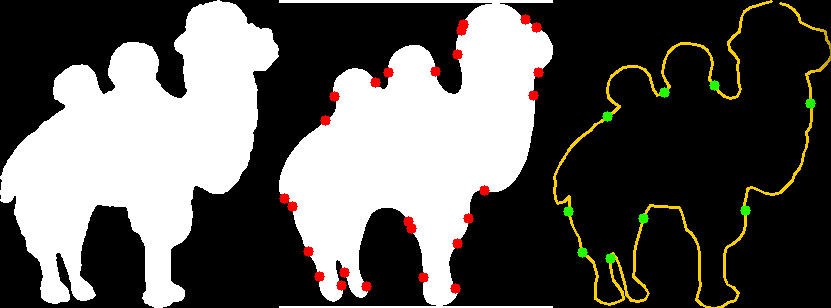 Don’t you just love scouring the web for a piece of simple code, come up short and then just write it yourself? Well that was the case with NURBS for me. These simple curvy lines, why doesn’t anyone just dish out a straightforward implementation of them? Well, now you have it. I wrote a simple renderer that reads a DXF file with NURBS (from Rhino3D) using DXFLIB, although the DXF file format is super easy to parse, and renders them to an image with OpenCV.
Don’t you just love scouring the web for a piece of simple code, come up short and then just write it yourself? Well that was the case with NURBS for me. These simple curvy lines, why doesn’t anyone just dish out a straightforward implementation of them? Well, now you have it. I wrote a simple renderer that reads a DXF file with NURBS (from Rhino3D) using DXFLIB, although the DXF file format is super easy to parse, and renders them to an image with OpenCV.
Tag: curve
I wish to report of a number of tweaks and additions to the hand silhouette tracker I posted a while back. First is the ability for it to “snap” to the object using a simple Active Snake method, another is a more advanced resampling technique (the older tracker always resampled after every frame), and of a number of optimizations to increase the speed (tracker now runs at real-time on a single core).
 I wanna share some code for 2D curve tracking with a particle filter, implementing the body of work of Tony Heap and David Hogg. These guys presented a relatively easy to implement method for tracking deformable curves through space and change in form using a Hierarchical Point Distribution Models (HPDM), which is another elegant way to store shape priors. Granted, it is not perfect, but for a simple 2D shape like a hand it works pretty good, and rather fast as well.
I wanna share some code for 2D curve tracking with a particle filter, implementing the body of work of Tony Heap and David Hogg. These guys presented a relatively easy to implement method for tracking deformable curves through space and change in form using a Hierarchical Point Distribution Models (HPDM), which is another elegant way to store shape priors. Granted, it is not perfect, but for a simple 2D shape like a hand it works pretty good, and rather fast as well.
Let’s dive in then,

 Hello,
Hello,
I wanna share some code I’ve been working on lately that implements smooth shape manipulation using Moving Least Squares. More specifically, the excellent simple and powerful method by Schaefer et al. from Texas A&M and Rice universities (great paper). The method was written for image deformation but very straightforward modifications made it work perfectly for 2D shapes and open curves.
Let’s get down to business


Just sharing some code and ideas for matching 2D curves. I was working for a while on matching 2D curves to discover shapes in images, but it didn’t work out, what did succeed is this 2D curve matcher that seems to be very robust for certain applications. It’s based on ideas from the Heat Kernel Signature and the CSS Image (that I introduced in my latest post), all around inspecting curves under different level of smoothing.


I’m so glad to be back to work on a graphics project (of which you will probably hear later), because it takes me back to reading papers and implementing work by talented people. I want share a little bit of utilities I’ve developed for working with 2D curves in OpenCV.
 Hi
Hi
Just wanted to share a thing I made – a simple 2D hand pose estimator, using a skeleton model fitting. Basically there has been a crap load of work on hand pose estimation, but I was inspired by this ancient work. The problem is setting out to find a good solution, and everything is very hard to understand and implement. In such cases I like to be inspired by a method, and just set out with my own implementation. This way, I understand whats going on, simplify it, and share it with you!
Anyway, let’s get down to business.
Edit (6/5/2014): Also see some of my other work on hand gesture recognition using smart contours and particle filters
 ICP – Iterative closest point, is a very trivial algorithm for matching object templates to noisy data. It’s also super easy to program, so it’s good material for a tutorial. The goal is to take a known set of points (usually defining a curve or object exterior) and register it, as good as possible, to a set of other points, usually a larger and noisy set in which we would like to find the object. The basic algorithm is described very briefly in wikipedia, but there are a ton of papers on the subject.
ICP – Iterative closest point, is a very trivial algorithm for matching object templates to noisy data. It’s also super easy to program, so it’s good material for a tutorial. The goal is to take a known set of points (usually defining a curve or object exterior) and register it, as good as possible, to a set of other points, usually a larger and noisy set in which we would like to find the object. The basic algorithm is described very briefly in wikipedia, but there are a ton of papers on the subject.
I’ll take you through the steps of programming it with OpenCV.